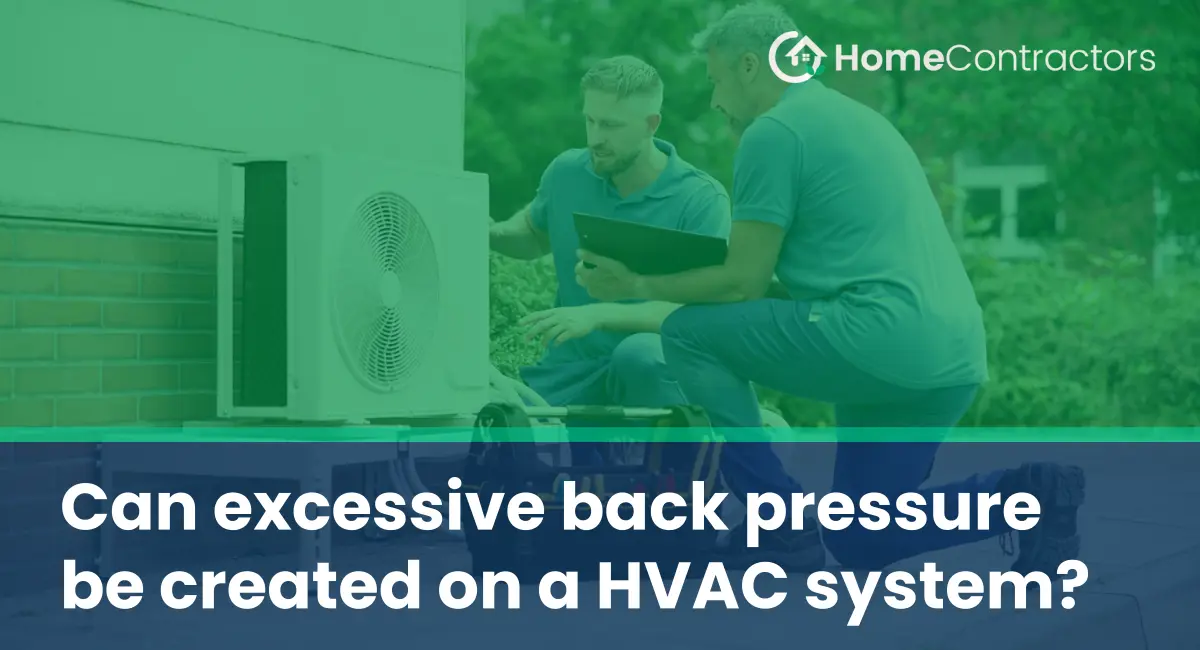HVAC (Heating, Ventilation, and Air Conditioning) systems play a crucial role in maintaining a comfortable indoor environment in residential, commercial, and industrial buildings. These systems are designed to provide a balanced airflow, regulate temperature, and maintain air quality. However, several factors can affect the efficiency and performance of an HVAC system. One such factor is back pressure. In this article, we will explore the concept of back pressure in HVAC systems, its causes, and the potential consequences.
Understanding Back Pressure in HVAC Systems
Back pressure refers to the resistance that air encounters as it moves through an HVAC system. It is caused by various factors, such as obstructions, excessive bends in ductwork, closed dampers, or dirty filters. When back pressure increases, the airflow through the system is restricted, leading to reduced efficiency and performance.
Causes of Excessive Back Pressure
1. Obstructions:
Obstructions, such as debris, dirt, or even small objects, can accumulate within the ductwork or at the openings of registers and grilles. These blockages hinder smooth airflow, increasing back pressure.
2. Excessive bends:
Excessive bends in the ductwork can disrupt airflow by creating turbulence and resistance. The more twists and turns there are, the higher the back pressure becomes.
3. Closed dampers:
Dampers are used to regulate the airflow within an HVAC system. If dampers are closed or partially closed, it restricts the flow of air and increases back pressure.
4. Dirty filters:
Dirty air filters are a common cause of back pressure in HVAC systems. When filters become clogged with dust, pollen, and other particles, they restrict airflow, leading to increased back pressure.
Consequences of Excessive Back Pressure
1. Reduced efficiency:
Excessive back pressure forces the HVAC system to work harder to maintain the desired airflow. This additional stress on the system’s components leads to reduced energy efficiency and increased energy consumption.
2. Uneven temperature distribution:
When back pressure increases, airflow becomes uneven throughout the building. Some areas may receive less conditioned air, resulting in inconsistent temperature distribution and discomfort for occupants.
3. Increased wear and tear:
The increased resistance caused by excessive back pressure puts additional strain on the HVAC system’s components. Over time, this can lead to accelerated wear and tear, reducing the system’s lifespan and increasing the likelihood of breakdowns and expensive repairs.
4. Poor air quality:
Back pressure can also impact air quality. When air cannot move freely through the system, it may become stagnant, resulting in poor ventilation. This can contribute to the buildup of pollutants, allergens, and other harmful substances, potentially causing health issues for building occupants.
Preventing and Addressing Excessive Back Pressure
1. Regular maintenance:
Routine maintenance is crucial for HVAC systems to ensure they operate efficiently. Regularly replace air filters, clean ductwork, and inspect dampers to prevent excessive back pressure.
2. Proper design and installation:
To avoid unnecessary bends and restrictions, it is essential to design and install HVAC systems correctly. Consult with professionals to ensure proper duct sizing, layouts, and positioning of registers and grilles.
3. Regular inspections:
Periodically inspect the ductwork for any signs of obstruction, such as debris or dirt. Additionally, check for closed dampers or any other factors that may contribute to back pressure.
4. Filter maintenance:
Regularly clean or replace air filters to prevent them from becoming clogged and restricting airflow. Follow the manufacturer’s guidelines for filter maintenance intervals.
Excessive back pressure in HVAC systems can significantly impact their efficiency, performance, and longevity. It is crucial to understand the causes and consequences of back pressure to prevent its occurrence. Regular maintenance, proper design and installation, and regular inspections can help mitigate the risk of excessive back pressure. By ensuring proper airflow, HVAC systems can provide optimal comfort and indoor air quality for occupants.
